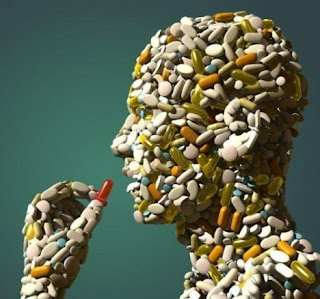A new study indicates that antipsychotic drug use has been on the rise among adolescents, even though most had not been diagnosed with a mental disorder.
The study, published this week in JAMA Psychiatry, used data from thousands of prescriptions to analyze trends between 2006 and 2010. The percentage of teens using the medication ticked up during the time period, with the highest rates of usage recorded among teens ages 13-18, according to the data. About 1.19 percent of that age group were using the drugs in 2010, compared with about 1.1 percent in 2006.
At the same time, 60 percent of those ages 1-6, 56.7 percent of those ages 7-12, 62 percent of those ages 13-18, and 67.1 percent of young adults, ages 19-24, taking these drugs had no outpatient or inpatient claim indicating a mental disorder diagnosis, the study said.
"There's a general consensus that great caution should be exercised with antipsychotic drugs," said Mark Olfson, lead author of the study and a professor at the Columbia University Medical Center. "This raises concerns about whether the right caution is taken."
Children ages 1-12 have seen a slight dip in antipsychotic drug usage since 2008, which the authors of the study suggest is the result of increased safety concerns. Still, a majority of this age group has also been taking the drugs without a diagnosed mental disorder.
Researchers also expressed concern that in cases where there are diagnosed mental disorders, the antipsychotic drugs are being used to treat unapproved conditions, such as attention deficit hyperactivity disorder and depression.
For children and adolescents, antipsychotics have been approved by the Food and Drug Administration to treat conditions, such as bipolar mania, schizophrenia and irritability associated with autism. They are not approved for ADHD or depression, although doctors are known to prescribe them in those cases.
Olfson said this is often done because the drugs provide a "fast relief" for behaviors in children that are difficult to manage. Parents and doctors in a difficult spot are usually willing to use drugs that are outside their approved uses.
The data does not show which disorders the antipsychotic drugs are specifically being used to treat, but more than half of young patients with mental health diagnoses taking the medication had either ADHD or depression. Less than a quarter of teens taking the drugs, on the other hand, were diagnosed with bipolar disorder or schizophrenia.
At the same time, less than a quarter of the patients undergo any form of therapy.
"We need to do more to increase access to non-pharmacological options," Olfson said.
Over the past few decades, antipsychotic drug use has surged in the United States, reaching sales of around $18.2 billion in 2011, according to the marketresearch firm IMS Health. In 2010, 2.8 million prescriptions were filled to treat teens alone, but recent studies have shown that the drugs — especially when combined with other psychotropic medications — pose health risks for young people. Studies show children taking antipsychotics are at higher risk of weight gain and increased cholesterol.
More than 80 percent of all teens taking antipsychotics are also taking other medications, such as stimulants, antidepressants and mood stabilizers, according to the study, and more than two-thirds of kids ages 1-6 taking antipsychotics are also using other psychotropic medication.
The study also said that males ages 13-18 have a much higher rate – about 1.5 times -- of antipsychotic drug use than females ages 13-18. That gap is even more pronounced in younger age groups, according to the study. That's likely because the drugs are often used to treat impulsive and aggressive behaviors, which is more common in young men. Still, the increase in use of the drugs has occurred among both males and females.
Read More:












No comments:
Post a Comment
PLEASE ADD COMMENTS SO I CAN IMPROVE THE INFORMATION I AM SHARING ON THIS VERY IMPORTANT TOPIC.